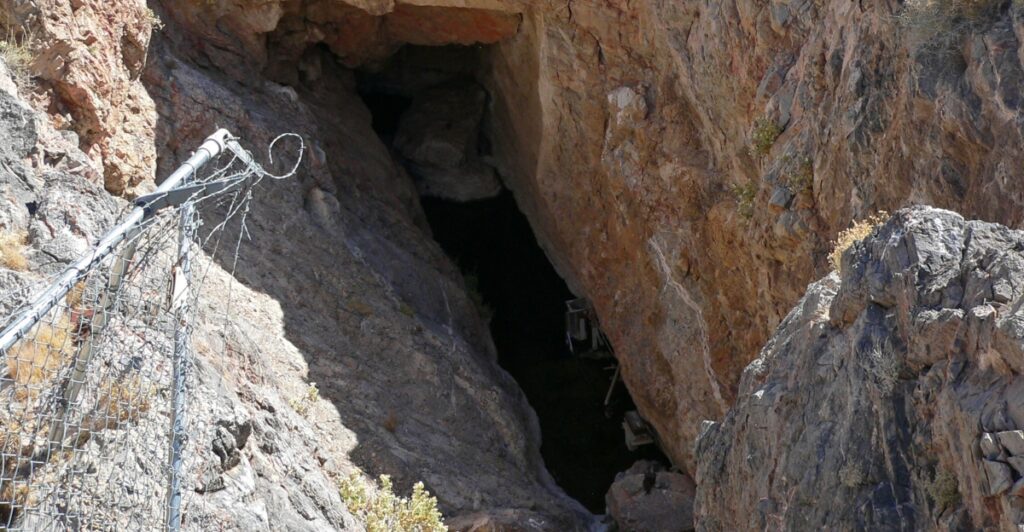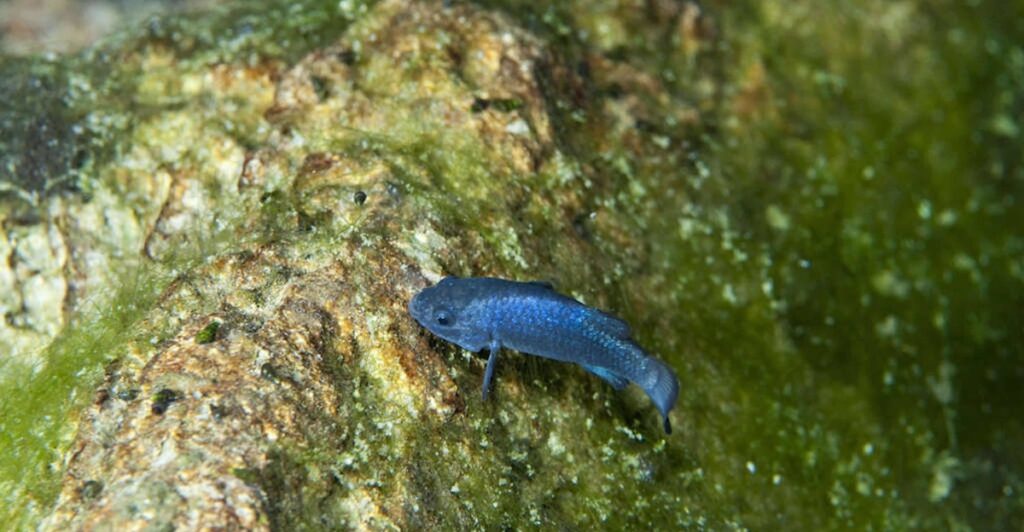
This spring, scientists recorded 191 Devils Hole pupfish in Nevada’s Mojave Desert—the largest spring count in 25 years. These iridescent blue fish are critically endangered, surviving in one of the smallest and harshest habitats known to vertebrates. After years of decline, conservationists are celebrating this hopeful sign. While their population numbers fluctuate naturally, this significant increase suggests conservation efforts are making an impact. But challenges remain, and this milestone marks a critical juncture for one of Earth’s rarest species.
A Habitat Like No Other

The Devils Hole pupfish resides exclusively in a single, water-filled cavern known as Devils Hole, located in Death Valley National Park. Their habitat is confined to a shallow, sunlit rock shelf just 11 by 16 feet big, perched above the cavern’s dark, deep waters. Water temperatures here reach a sweltering 92 °F, and oxygen levels are extremely low. This unique and isolated environment is a study in extremes, making the pupfish’s survival all the more remarkable. It is both a refuge and a precarious home.
The Population’s Lowest Point

In 2013, the Devils Hole pupfish population plummeted to just 35 individuals, its lowest recorded count. The species faced the risk of extinction, a stark reminder of how fragile its existence had become. Conservationists launched emergency measures to stabilize the population, including supplemental feedings and habitat monitoring. These interventions, while resource-intensive, bought precious time for the pupfish. Today’s higher numbers suggest that these efforts may be paying off, though long-term success is far from guaranteed.
Counting Fish in a Cavern

Twice a year, a team of scientists gathers at Devils Hole to count the pupfish. Using scaffolding and SCUBA gear, they conduct a thorough survey from the shallow feeding shelf to depths exceeding 100 feet. This process is crucial for tracking population trends and understanding environmental conditions. The recent count was especially encouraging, with many juvenile fish observed. Such data informs future conservation strategies and provides a snapshot of the species’ progress.
Floods Are Good News

Last year, flash floods from Hurricane Hilary swept through Death Valley, a rare event for the desert. While the floods caused significant damage to park infrastructure, they unexpectedly benefited the Devils Hole pupfish. Silt and nutrients carried into the cavern spurred algae growth on the shallow rock shelf, providing an essential food source for the fish. This natural nutrient boost likely contributed to the population increase observed this spring.
Decades of Conservation Action

The Devils Hole pupfish has been a conservation priority for decades. In 1976, a Supreme Court ruling protected the water levels in Devils Hole, ensuring this vital habitat would not be drained by groundwater pumping. This landmark decision recognized the intrinsic value of preserving unique species. Subsequent efforts, including habitat restoration and captive breeding programs, have continued to protect the pupfish. This year’s count shows the enduring importance of these measures and the commitment of those working to save the species.
How Pupfish Survive the Desert

Adapting to one of the world’s harshest environments, the Devils Hole pupfish is a master of survival. Its tiny body, barely an inch long, is built for efficiency and requires minimal food to thrive. These fish feed primarily on algae and microorganisms, sustaining themselves on the limited resources of their rocky habitat. Their short lifespan—only about 12 to 14 months—allows for rapid reproduction, helping the population endure environmental challenges. Each individual is a marvel of adaptation.
Climate Change Looming Overhead

While the pupfish population has rebounded, the threats of climate change cast a long shadow over their future. Rising temperatures in Death Valley, combined with erratic weather patterns, could disrupt the delicate balance of the Devils Hole ecosystem. Record-breaking heat waves in recent years have tested the limits of this fragile habitat. Without intervention to mitigate climate impacts, the conditions that allowed the pupfish to thrive could deteriorate, threatening their survival once again.
A Key Player in the Ecosystem

A Devils Hole pupfish isn’t just a unique species; it plays a critical role in its environment. By feeding on algae and detritus, the fish contribute to the health of the aquifer that sustains it. This aquifer, in turn, supports a web of life in the desert. Protecting the pupfish means preserving the integrity of this interconnected system, benefiting countless other species and maintaining the desert’s ecological balance.
The Genetic Challenge

Isolation has left the Devils Hole pupfish with low genetic diversity, making them particularly vulnerable to diseases and environmental changes. This genetic bottleneck presents a significant challenge to their long-term survival. Conservationists are working on solutions, including captive breeding programs, to introduce genetic variation and create a safety net for the species. These efforts aim to reduce the risks associated with inbreeding while maintaining the population’s unique traits.
Innovation Meets Conservation

Modern technology plays a vital role in protecting the Devils Hole pupfish. Tools like remote sensors monitor water levels, temperatures, and even the fish themselves, providing real-time data for researchers. This information helps conservationists respond quickly to changes in the environment. Technology also supports the development of artificial refuges, offering potential backup habitats in case of a disaster in Devils Hole. These advancements are shaping a more informed and proactive approach to preserving the species.
Threats Beyond Nature

Human activity poses additional risks to the Devils Hole pupfish. Urban expansion, recreational use, and mining increase demands on the aquifer that feeds their habitat. Even slight changes in water levels could expose the critical feeding shelf, jeopardizing the fish’s survival. Balancing human needs with environmental conservation remains a delicate task. Ensuring the pupfish’s future requires continued vigilance and collaboration among scientists, policymakers, and local communities.
The Fight to Save a Species

The Devils Hole pupfish symbolizes the complex challenges of species preservation. This year’s population increase is a cause for optimism, but the battle is far from over. With threats like climate change and habitat degradation still looming, the pupfish’s survival depends on sustained conservation efforts. Protecting this tiny species means safeguarding an entire ecosystem—and honoring the interconnectedness of life on our planet.
Resources:
Mongabay: A tiny desert fish hits a 25 year population high in one of Earth’s harshest environments
Popular Science: Devils Hole pupfish are clawing their way back from the brink of extinction
Stay connected with us for more stories like this! Follow us to get the latest updates or hit the Follow button at the top of this article, and let us know what you think by leaving your feedback below. We’d love to hear from you!







